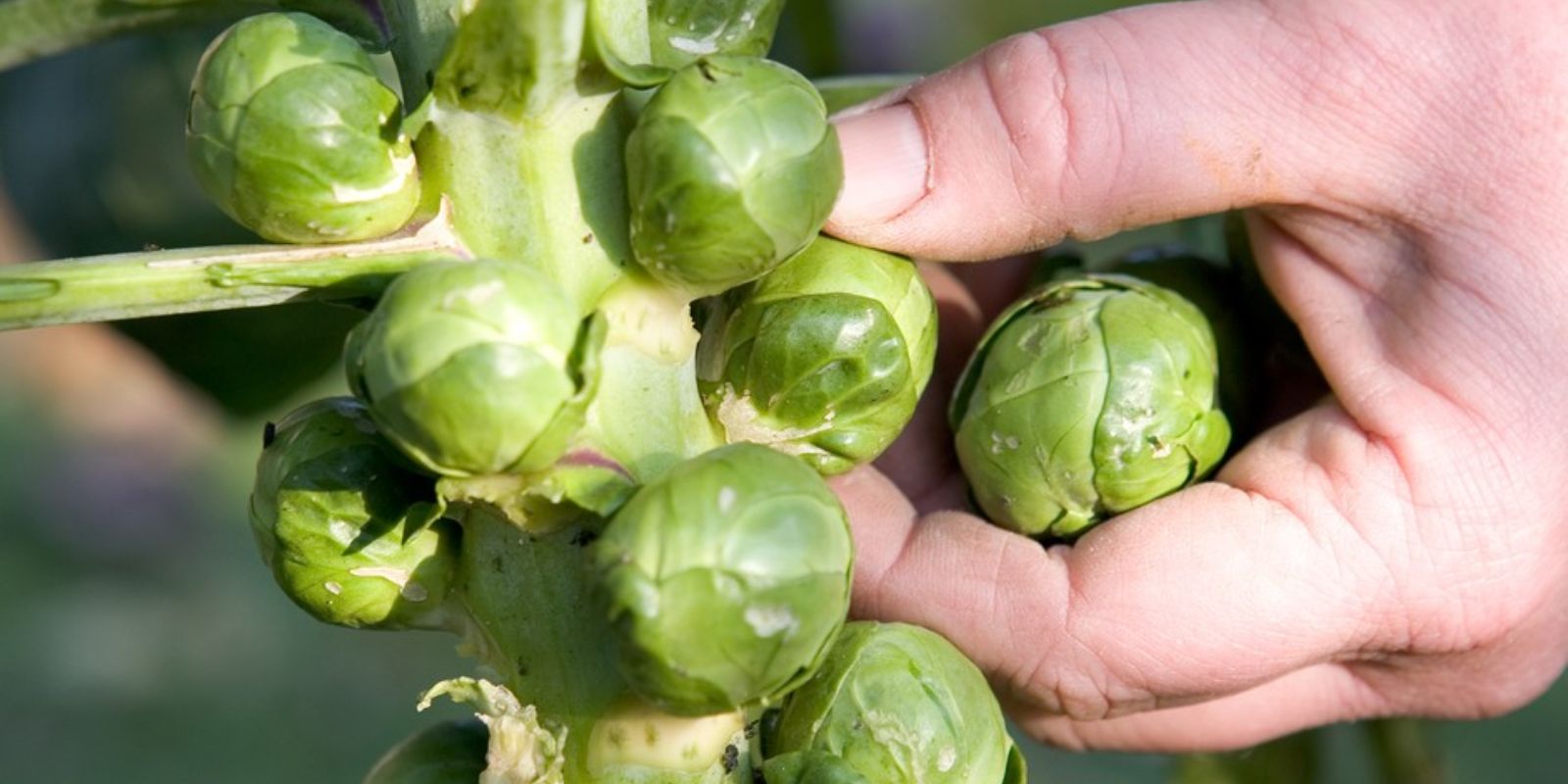Introduction
Brussels sprouts are a unique and nutritious vegetable that can add a flavorful and healthy touch to your meals. Known for their compact, cabbage-like heads and their ability to thrive in cooler weather, Brussels sprouts are a rewarding crop for gardeners. Despite their reputation for being a bit tricky to grow, with the right techniques and care, you can successfully cultivate these veggies in your garden. This guide will walk you through the essential steps to grow Brussels sprouts with ease, from soil preparation to harvest.
Choosing the Right Location
Understanding Brussels Sprouts’ Needs:
Brussels sprouts thrive in cool weather and require specific conditions to grow well. Selecting the right location is crucial to achieving a successful harvest.
Location Tips:
- Sunlight: Choose a sunny spot in your garden where the plants will receive at least 6 hours of direct sunlight each day. While Brussels sprouts can tolerate partial shade, full sun will encourage better growth and yield.
- Soil: Opt for well-drained soil to prevent waterlogging, which can lead to root rot and other issues. Loamy soil rich in organic matter is ideal for Brussels sprouts. The soil should be loose and well-aerated.
Preparing the Soil
Soil Preparation Steps:
- Soil Testing: Test your soil’s pH to ensure it falls between 6.0 and 7.0, which is optimal for Brussels sprouts. You can use a home soil testing kit or send a sample to a local extension service for analysis.
- Amend the Soil: Improve soil fertility and structure by incorporating compost or well-rotted manure. This will enrich the soil with essential nutrients and improve its moisture-retaining capacity.
- Tilling: Loosen the soil to a depth of about 12 inches. This helps with root development and ensures that nutrients and water can reach the plant roots effectively.
Planting Brussels Sprouts
Starting from Seeds or Seedlings:
Brussels sprouts can be started from seeds or seedlings, depending on your preference and local growing season.
Planting Steps:
- Seeds: Start seeds indoors about 6-8 weeks before the last expected frost. Sow seeds 1/2 inch deep in seed trays or pots filled with seed-starting mix. Keep the soil moist and maintain a temperature of around 65-70°F (18-21°C) for germination.
- Seedlings: Transplant seedlings outdoors when they are 4-6 weeks old and have at least two sets of true leaves. Harden them off by gradually exposing them to outdoor conditions over a week.
- Direct Sowing: In regions with mild winters, you can sow seeds directly into the garden after the last frost. Plant seeds 1/2 inch deep and space them about 2 inches apart. Thin seedlings to 18-24 inches apart once they have a few sets of leaves.
Caring for Brussels Sprouts
Watering:
Brussels sprouts require consistent moisture to grow well. Irregular watering can lead to stress and poor development of the sprouts.
- Initial Watering: Water seedlings thoroughly after transplanting to help them establish their roots.
- Ongoing Care: Maintain even soil moisture throughout the growing season. Water deeply and regularly, especially during dry periods. Avoid overhead watering to reduce the risk of fungal diseases.
Fertilizing:
Brussels sprouts are heavy feeders and benefit from regular fertilization.
- Fertilizer Application: Use a balanced fertilizer or compost to provide essential nutrients. Apply a balanced fertilizer, such as a 10-10-10 mix, every 4-6 weeks during the growing season. Alternatively, you can side-dress with compost to add nutrients.
- Organic Matter: Incorporate additional compost or organic matter into the soil periodically to support healthy growth and improve soil structure.
Mulching:
Mulching helps retain soil moisture, suppress weeds, and maintain a consistent soil temperature.
- Mulch Types: Use organic mulches like straw, wood chips, or shredded leaves around the base of the plants. Apply a layer of mulch 2-3 inches thick, keeping it away from the plant stems.
Managing Pests and Diseases
Common Pests:
Brussels sprouts can be affected by various pests, including aphids, cabbage worms, and cutworms.
- Pest Control: Inspect plants regularly for signs of pests. Use organic insecticidal soap or neem oil to manage aphids and other soft-bodied insects. Hand-pick and remove cabbage worms or use floating row covers to protect plants.
Disease Prevention:
Common diseases affecting Brussels sprouts include downy mildew, powdery mildew, and black rot.
- Disease Management: Ensure proper plant spacing for good air circulation to reduce humidity and prevent fungal diseases. Remove and dispose of any diseased plants promptly. Avoid overhead watering to minimize the risk of fungal infections.
Harvesting Brussels Sprouts
Harvest Timing:
Brussels sprouts typically take 90-100 days from transplanting to reach maturity. Timing the harvest correctly is crucial for the best flavor and texture.
Harvesting Steps:
- Sprout Maturity: Harvest Brussels sprouts when they are firm and green, about 1-1.5 inches in diameter. Start picking from the bottom of the plant and work your way up. Harvest sprouts individually or cut entire stalks when most sprouts are mature.
- Post-Harvest: After harvesting, store Brussels sprouts in the refrigerator for up to two weeks. For longer storage, you can blanch and freeze them.
Enjoying Brussels Sprouts
Culinary Uses:
Brussels sprouts are incredibly versatile and can be used in various dishes.
- Cooking Ideas: Roast Brussels sprouts with olive oil and your favorite seasonings for a delicious side dish. Sauté them with garlic and bacon for added flavor. Incorporate Brussels sprouts into salads, casseroles, or stir-fries for a nutritious boost.
Conclusion
Growing Brussels sprouts can be a highly rewarding experience with the right approach and care. By choosing the right location, preparing the soil properly, and following these cultivation tips, you can enjoy a bountiful harvest of this nutritious and flavorful vegetable. Embrace the challenge and savor the satisfaction of homegrown Brussels sprouts in your meals. Happy gardening! 🌱🥦

